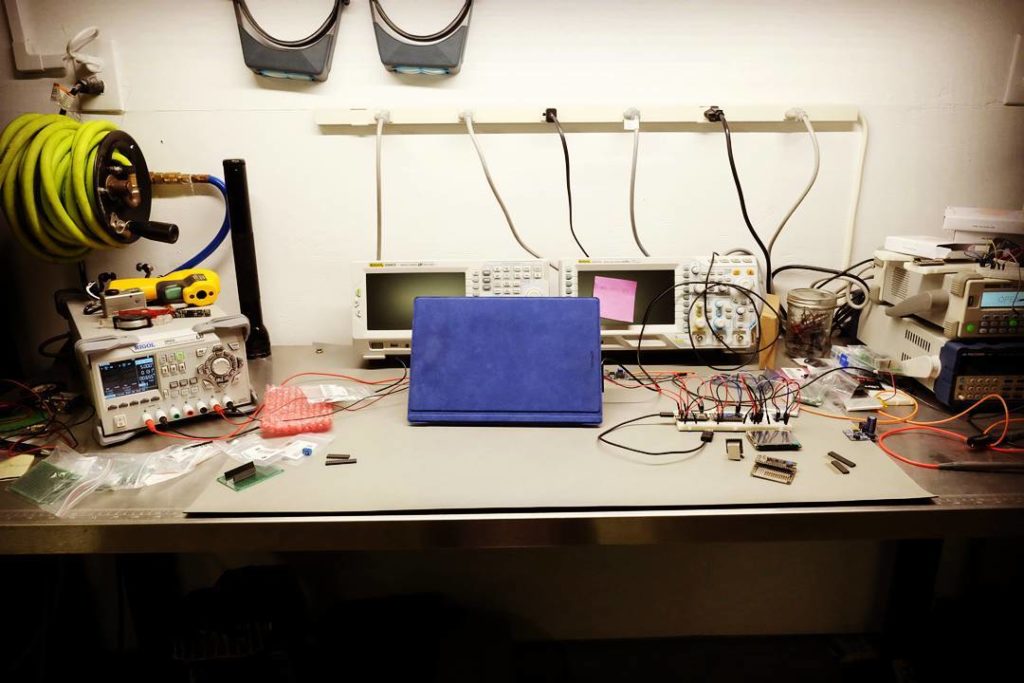
This is a picture of my workbench and some gizmo I was making last year. I originally wanted to be an electronics engineer. However, back in the dark ages of the 80’s, hardware geeking was much harder than today. The cost of the test equipment was prohibitively expensive and way outside of my reach. Access to parts was usually limited to what you could find at Radio Shack. If you wanted broader access to parts, such as CPUs, memory, or other integrated circuitry your best bet was to ask for engineering samples. I was a young starving student and I did not have the money nor patience required to get into hardware, so I shifted to software.
What I like about software is the immediacy of it all. If you have an idea, you can start cranking out some code. And unlike hardware, where a mistake might fry your circuit, software is forgiving. You just tweak the code to fix a bug and recompile – nothing gets nuked.
But I never really stopped liking hardware. It is also much more accessible today. Arduinos and Raspberry Pi boards have brought embedded computing to the masses. There’s easy access to parts from the likes of Mouser or Digikey – even Amazon. Data sheets are readily available directly from the manufacturer. The cost of bench equipment is also much more affordable now – I’ve seen entry level oscilloscopes for ~$300 (or less).
About equipment. I have a bench power supply, oscilloscope, electronic load, bench DVM, and spectrum analyzer. This allows me to experiment in all the areas I find interesting. However, if you’re interested in electronics start with a handheld multimeter (DVM). You’ll use it for all kinds of things and a DVM can take you a long long way.
